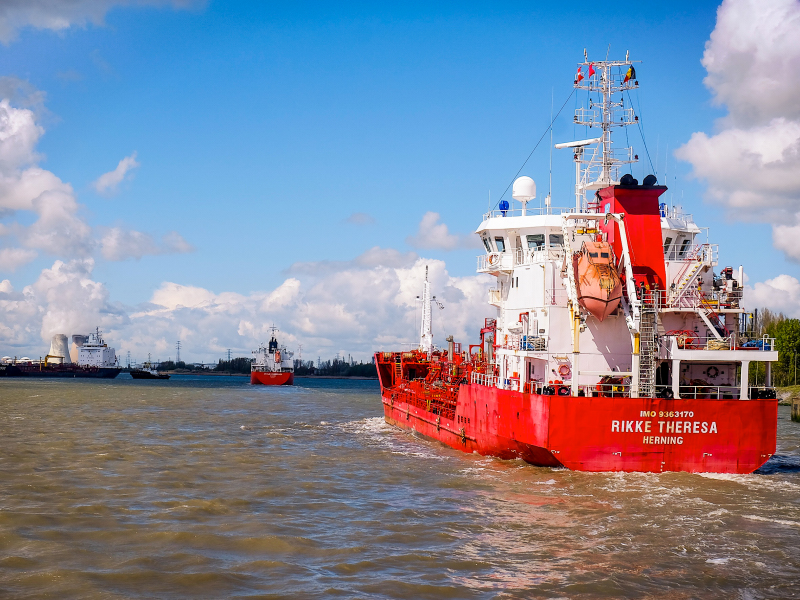Optimisation of Ship-generated Waste Collection
13.20
From 2013 to 2014
Together with Ecorem, TML investigated the extent to which the collection network for shipping waste in Flanders meets the requirements of the CDNI and contemporary sector needs. The study led to three variants for the collection system and resulted in a preferred variant that includes mobile reception facilities and improved sorting capabilities and highlights the need for better international coordination.
On 9 September 1996, the Convention on the Collection, Deposit and Reception of Waste in Rhine and Inland Navigation (CDNI) came into force in Strasbourg. The CDNI is a regulation covering the collection and treatment of waste produced by inland vessels and entered into force on 1 November 2009. The countries concerned are the Netherlands, Germany, France, Switzerland, Luxembourg, and Belgium. The CDNI specifies that the states involved must provide a sufficiently dense network of reception facilities for ship-generated commercial waste but does not address in detail the criteria of this sufficiently dense network.
In this study, TML, in collaboration with Ecorem, investigated to what extent the collection network for shipping waste from inland navigation in Flanders meets the requirements of the CDNI, as well as the requirements of the sector of today and tomorrow. In doing so, we also investigated what cooperation possibilities exist between the waterway and port managers, how the development of an optimal network can be enforced, and what changes to the legislative framework may be needed.
First, we assessed the collection network based on the geographical distribution of the existing collection points, the shipping intensity on the different waterways, and the average amounts of waste collected at the different collection points. Three variants for the existing collection system were then worked out:
The different variants were assessed in terms of environmental performance, cost efficiency, and uniformity with neighbouring countries, among others. The selected preferred variant consists of a combination of the strong aspects of the different variants and includes the following elements:
Based on the study, it could be generally concluded that Flanders has an extensive and well-organised collection network for waste from inland navigation, which could be further optimised subject to some adjustments.
At the international level, there is a need for better coordination, especially for the collection of household waste and small hazardous waste. Although the CDNI requires member states to make corresponding arrangements for the financing and collection of hazardous waste, this does not happen in practice. Regarding Part B of the implementing regulation, there is a need for internationally coordinated arrangements to flesh out the delivery requirements for wash waters.
On 9 September 1996, the Convention on the Collection, Deposit and Reception of Waste in Rhine and Inland Navigation (CDNI) came into force in Strasbourg. The CDNI is a regulation covering the collection and treatment of waste produced by inland vessels and entered into force on 1 November 2009. The countries concerned are the Netherlands, Germany, France, Switzerland, Luxembourg, and Belgium. The CDNI specifies that the states involved must provide a sufficiently dense network of reception facilities for ship-generated commercial waste but does not address in detail the criteria of this sufficiently dense network.
In this study, TML, in collaboration with Ecorem, investigated to what extent the collection network for shipping waste from inland navigation in Flanders meets the requirements of the CDNI, as well as the requirements of the sector of today and tomorrow. In doing so, we also investigated what cooperation possibilities exist between the waterway and port managers, how the development of an optimal network can be enforced, and what changes to the legislative framework may be needed.
First, we assessed the collection network based on the geographical distribution of the existing collection points, the shipping intensity on the different waterways, and the average amounts of waste collected at the different collection points. Three variants for the existing collection system were then worked out:
- Optimisation of the existing collection system.
- Conversion to a collection network with exclusive industry access.
- Conversion to a collection network with predominantly mobile collection facilities.
The different variants were assessed in terms of environmental performance, cost efficiency, and uniformity with neighbouring countries, among others. The selected preferred variant consists of a combination of the strong aspects of the different variants and includes the following elements:
- The use of a mobile reception facility in the region around Ghent.
- Reduction of the number of domestic waste collection facilities along the waterways.
- Improvement of sorting facilities for household waste.
- The establishment of an additional waste park along the Albert Canal.
Based on the study, it could be generally concluded that Flanders has an extensive and well-organised collection network for waste from inland navigation, which could be further optimised subject to some adjustments.
At the international level, there is a need for better coordination, especially for the collection of household waste and small hazardous waste. Although the CDNI requires member states to make corresponding arrangements for the financing and collection of hazardous waste, this does not happen in practice. Regarding Part B of the implementing regulation, there is a need for internationally coordinated arrangements to flesh out the delivery requirements for wash waters.


